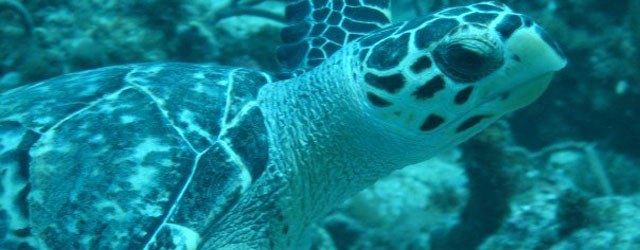(Eretmochelys imbricata)
For centuries Hawksbills were prized for their beautiful hard shell, made up of overlapping amber plates mottled with brown, black and yellow. This “tortoise shell” from which a variety of ornamental craft and jewelry are made was highly sought after prior to the introduction of (CITES), The Convention on International Trade in Endangered Species of Wild Flora and Fauna. Trading in turtle shells and turtle shell products has been banned internationally, however some turtle shell ornaments still make it clandestinely onto the local market. This is illegal and the purchaser could face stiff penalties, so Buyer Beware!
Hawksbill populations continue to decline in many parts of the world and are listed as critically endangered worldwide due to over-exploitation, degradation of marine and nesting habitats, incidental mortality relating to marine fisheries.





